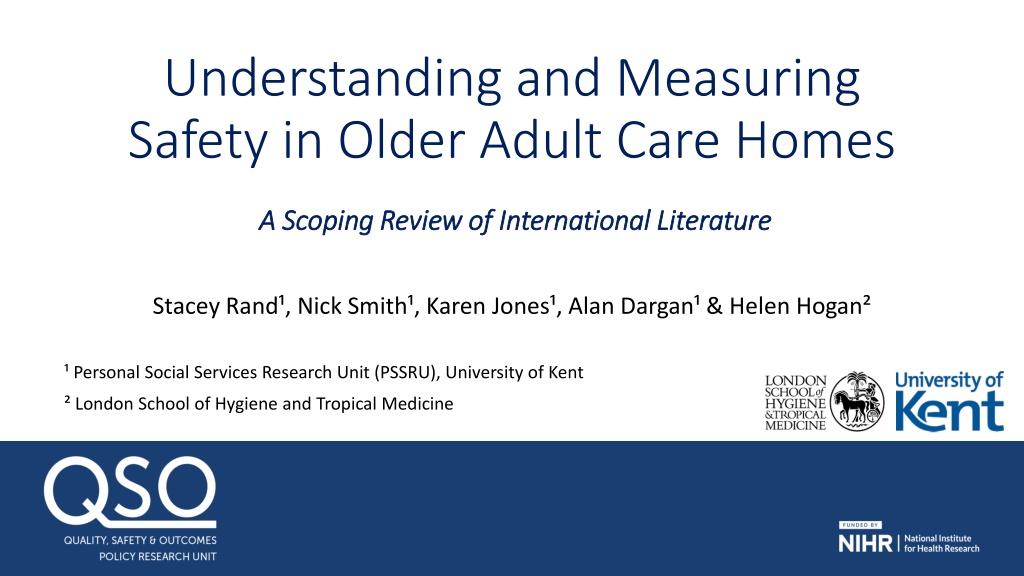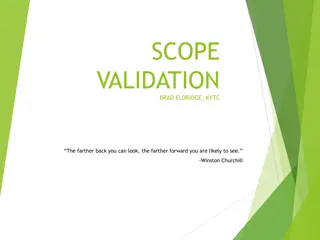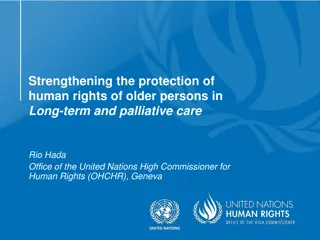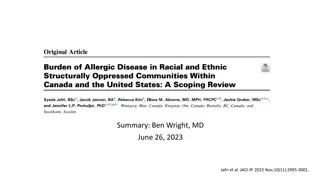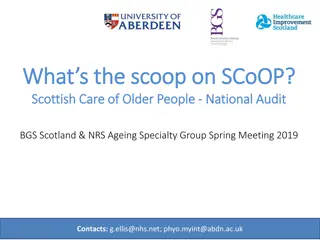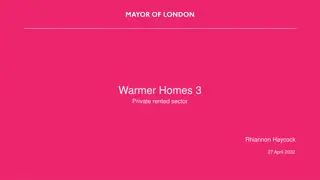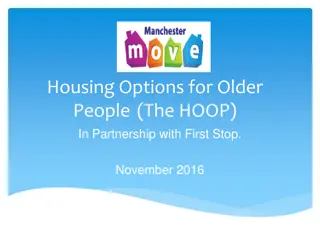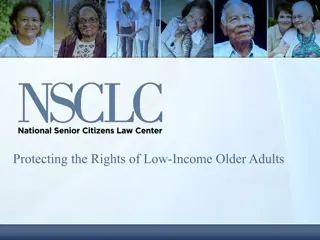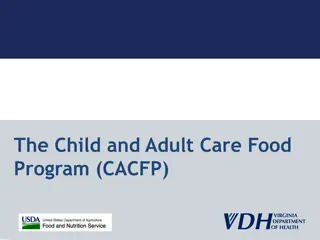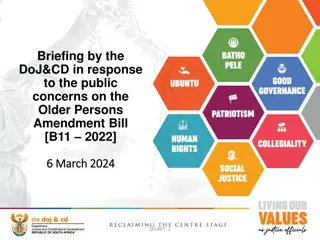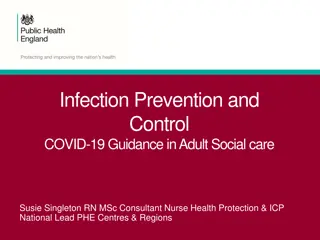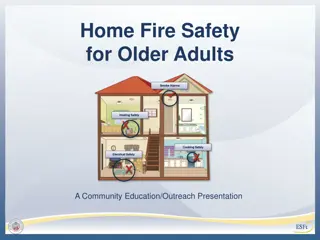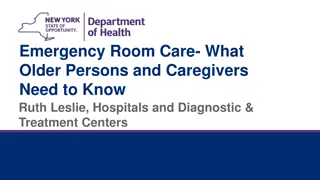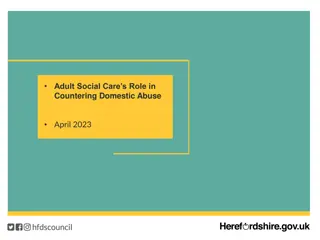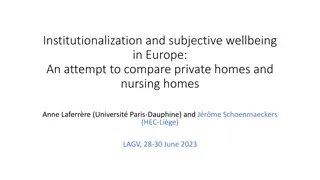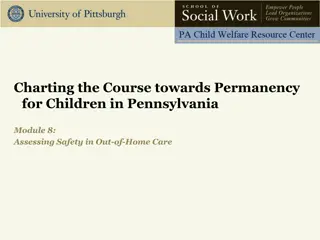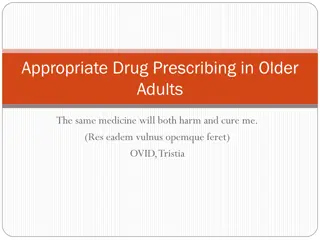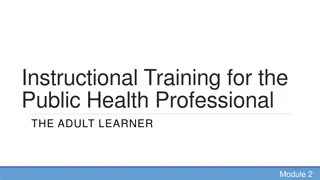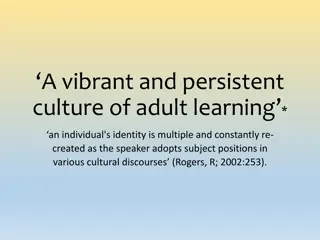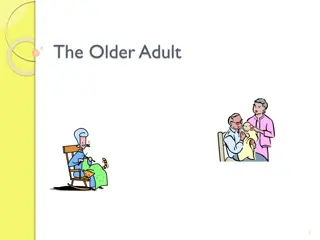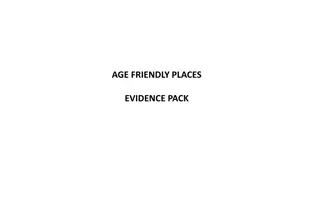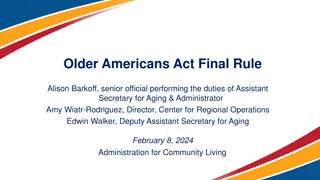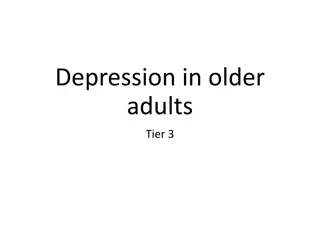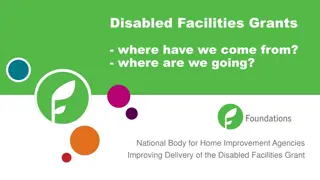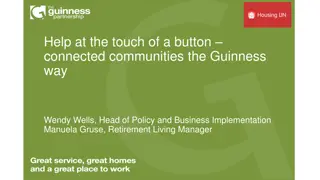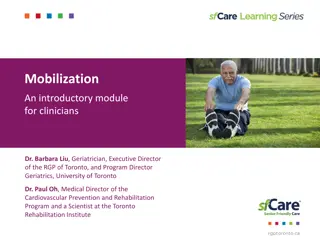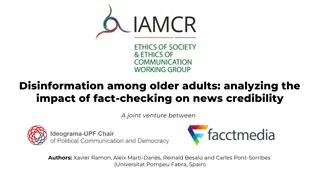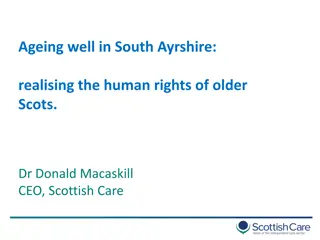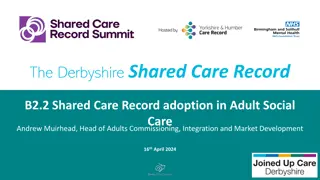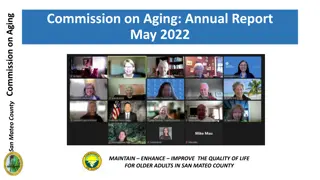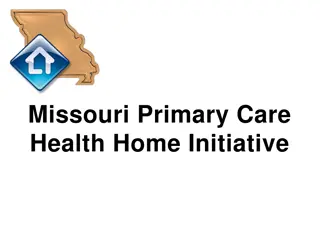Understanding and Measuring Safety in Older Adult Care Homes: A Scoping Review
This scoping review explores safety indicators in older adult care homes internationally to improve quality and decision-making. It aims to bridge gaps between theoretical models in healthcare and care home settings by identifying and analyzing safety measures. The study emphasizes the importance of safety in preventing harm to residents and highlights leadership and organizational culture as key factors in maintaining safety standards.
Download Presentation

Please find below an Image/Link to download the presentation.
The content on the website is provided AS IS for your information and personal use only. It may not be sold, licensed, or shared on other websites without obtaining consent from the author. Download presentation by click this link. If you encounter any issues during the download, it is possible that the publisher has removed the file from their server.
E N D
Presentation Transcript
Understanding and Measuring Safety in Older Adult Care Homes A Scoping A Scoping R Review of International eview of International L Literature iterature Stacey Rand , Nick Smith , Karen Jones , Alan Dargan & Helen Hogan Personal Social Services Research Unit (PSSRU), University of Kent London School of Hygiene and Tropical Medicine
Disclaimer Disclaimer This research is funded by the National Institute for Health Research (NIHR) Policy Research Programme, conducted through the Quality, Safety and Outcomes Policy Research Unit, PR-PRU-1217-20702. The views expressed are those of the author(s) and not necessarily those of the NIHR or the Department of Health and Social Care.
Background Background 16,000 registered care homes in the UK (residential and/or nursing care), with capacity of up to 450,000 beds 70% older adult Safety is the absence of preventable harm and minimization of unnecessary risk of harm to residents Physical harm Psychological harm Improving and maintaining safety Important role of leadership, organizational culture and process How to measure and apply safety indicators in practice, to drive safety improvements? Differences in context compared to healthcare settings Needs to be reflected in the measurement and application of indicators.
Aims and Objectives Aims and Objectives To identify safety indicators used (internationally) to inform quality or safety improvement and decision-making. Do these measures map to theoretical models of safety monitoring and measurement, developed in healthcare contexts? Are there any gaps?
Methods Methods Five stage framework for scoping reviews (Arksey & O Malley, 2005) Stage 1. Develop research question Stage 2. Systematic searches Inclusion criteria: English language, 1970 to 2019, no restriction to country, peer-reviewed articles Databases: Web of Science, Scopus, PubMed Search: safety AND care home OR nursing home OR residential home refined by indicator Stage 3. Screening of title and abstract Relevant to care context (care homes for older adults) and topic (safety monitoring or measurement, concepts of safety) Stage 4. Extract key information (charting) Stage 5. Organize identified safety measures/themes Used the Safety Measurement and Monitoring Framework (SMMF) (Vincent et al, 2014)
Findings Findings
Dimension Harm Has care been safe in the past? Indicators of Safety Physical harm pressure ulcers, falls, diarrheal disease or scabies, malnutrition, dehydration, incontinence, catheterisation, unplanned weight change, urinary tract infections, decline in activities of daily living, pain, and mortality Psychological harm Measures of an individual s sense of self, belonging, comfort, security, emotional distress, privacy, respect, autonomy, and dignity Omission of safety critical care activities, e.g. ambulation, turning Medication-related measures Physical environment of the care home, e.g. lighting & ventilation Social use of the care home environment, e.g. lack of privacy, intrusive noise How care is delivered in the space Care record keeping Reliability Are systems, processes and behaviour reliable?
Dimension Sensitivity to operations Is care safe today? Indicators of Safety Resident-report of feeling safe Other safety-related aspects of user experience Anticipation and preparedness Will care be safe in the future? Staffing levels, skill or training Patient safety culture Integration and learning Are we responding and improving? Use of national/regional datasets, e.g. Resident Assessment Instrument Minimum Data Set 2.0 (RAI-MDS 2.0).
Discussion Discussion A wide range of available safety indicators Focus tends to be on clinical measures, physical harm vs psychological harm How to better reflect person-centred care? How does care respect a person s dignity and sense of self? independence, choice and control? ability to live in an environment that is safe, clean and homely ? ability to socialize, as they wish (with family, friends, staff, other residents)? Etc. and collect these data in care home context? Gap in measures of incidence of abusive or neglectful care practice Limited evidence of learning from safety data within staff team, within the care home, between care homes, or at systems-level Influences at multiple levels, from individual staff (e.g. training) to systems level (e.g. funding, policy, inter-organizational relationships)
Next steps Next steps Ongoing QSO-PRU qualitative study of safety in care homes in England. What are key issues related to safety, in practice? Within team, within care home, between homes, inter-organizational, systems-level What safety indicators are already collected? How are they used? What are the opportunities, challenges and barriers to the systematic collection and use of safety data for quality and safety improvement? Analysis of Safeguarding Adults Reviews Qualitative interviews (to be presented by colleague, Nick Smith) Professional stakeholders (local authorities, CQC, DHSC, provider associations) With a second phase of interviews with care home managers, staff, residents and family.
Any questions? Any questions? s.e.rand@kent.ac.uk @StaceyERand Reference Rand S, Smith N, Jones K, et al. Measuring safety in older adult care homes: A scoping review of the international literature. BMJ Open 2021;11:e043206. doi: 10.1136/bmjopen-2020-043206
